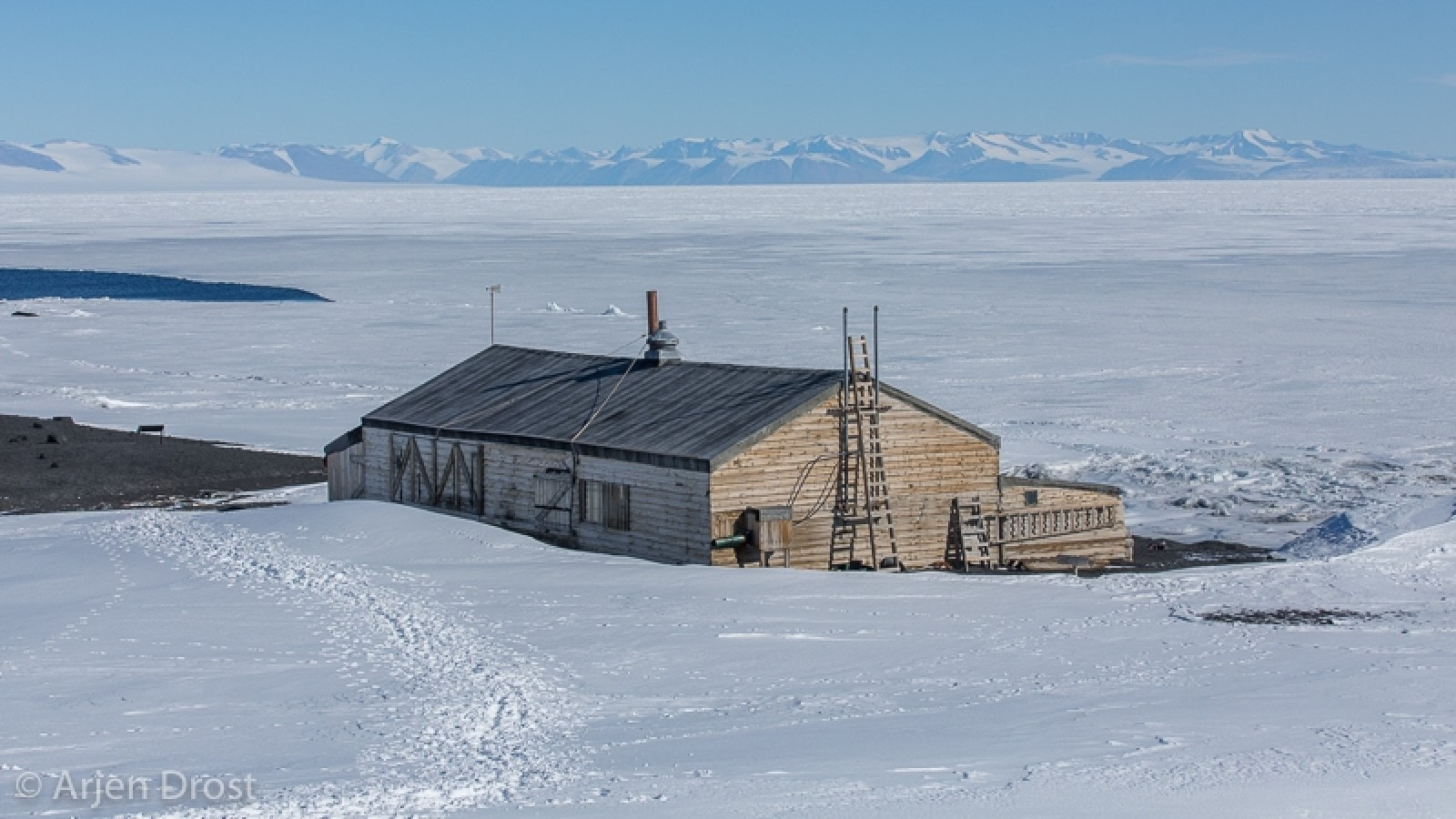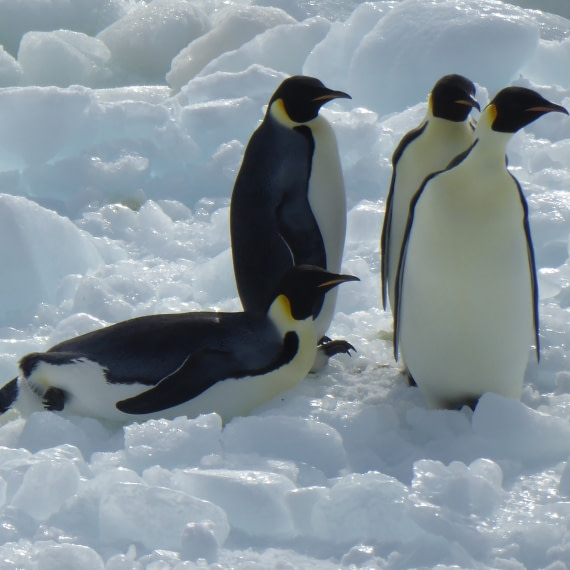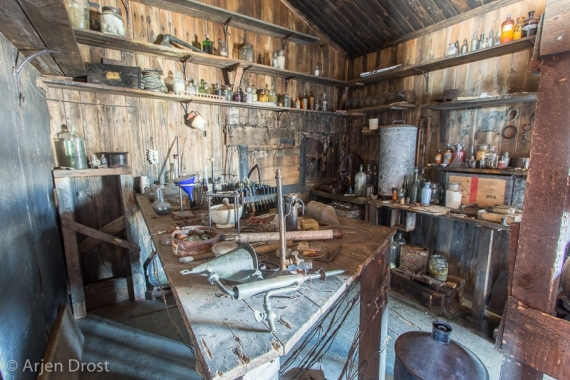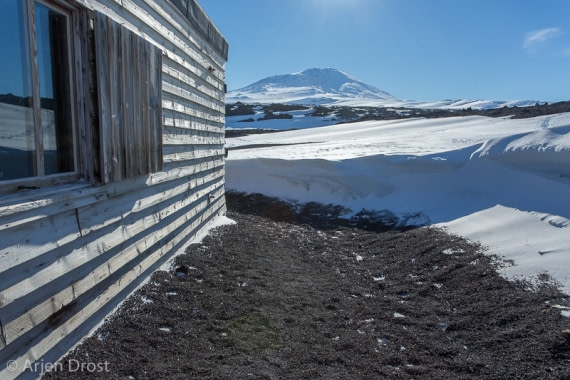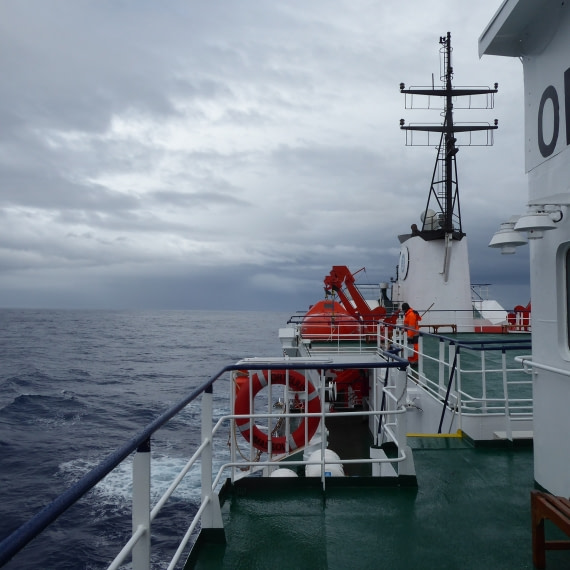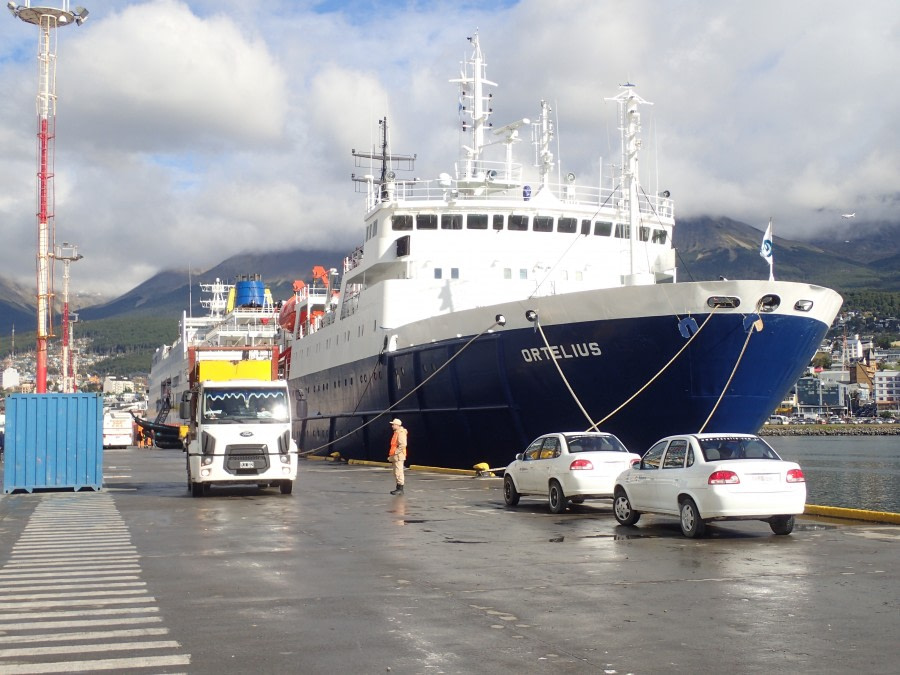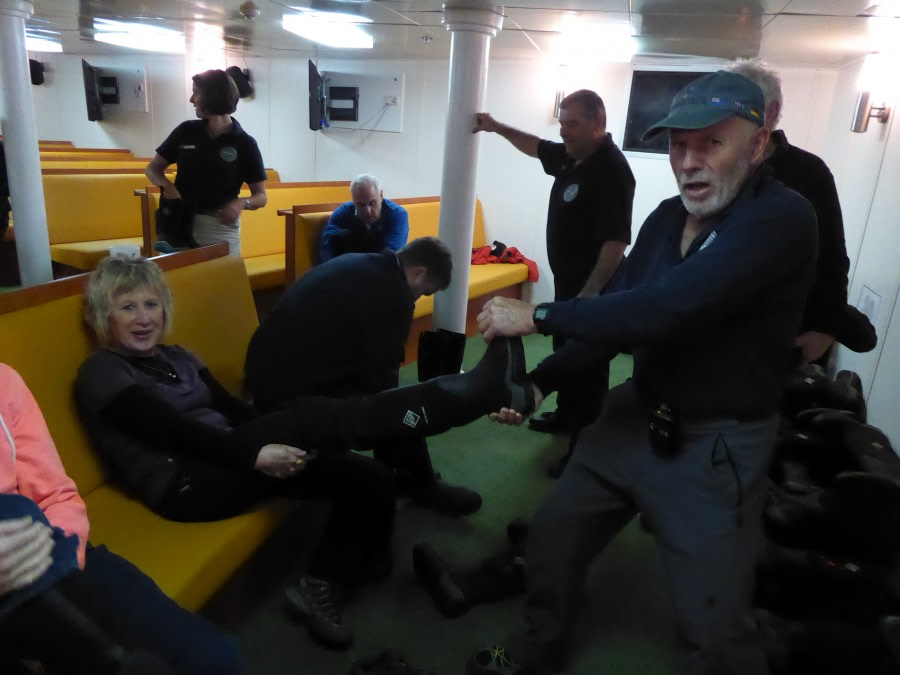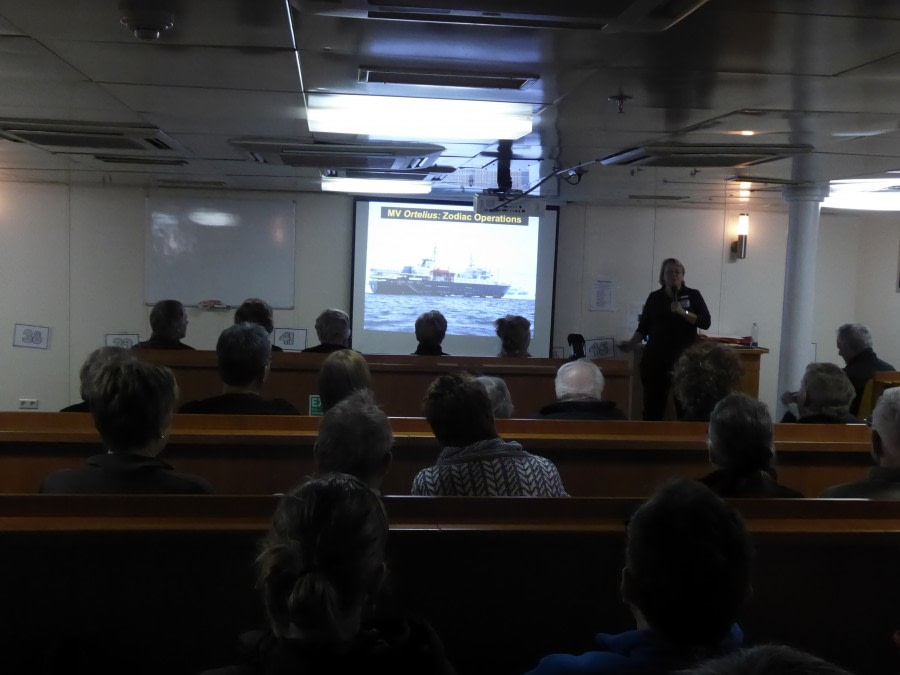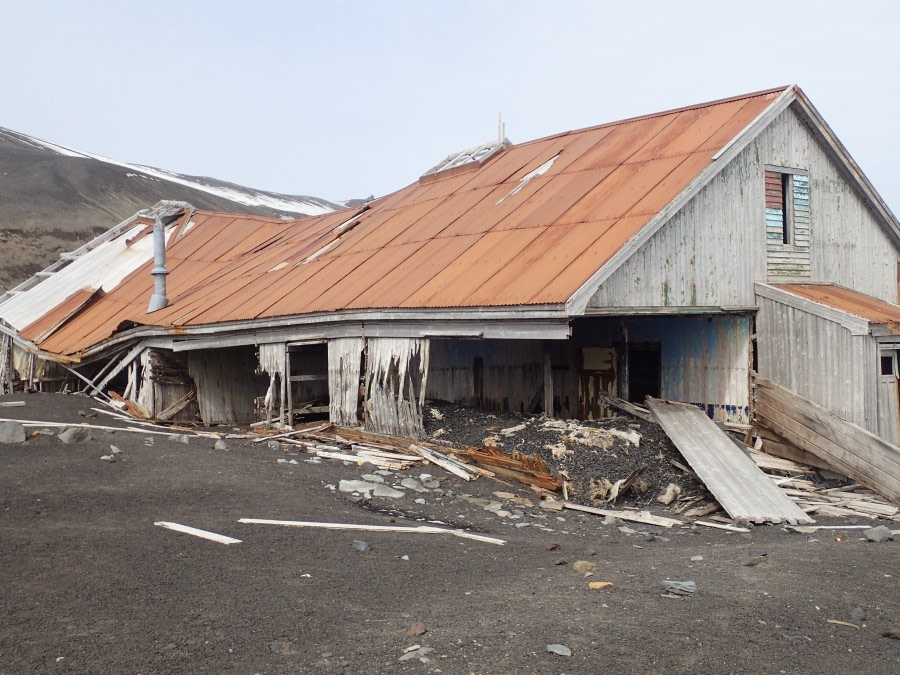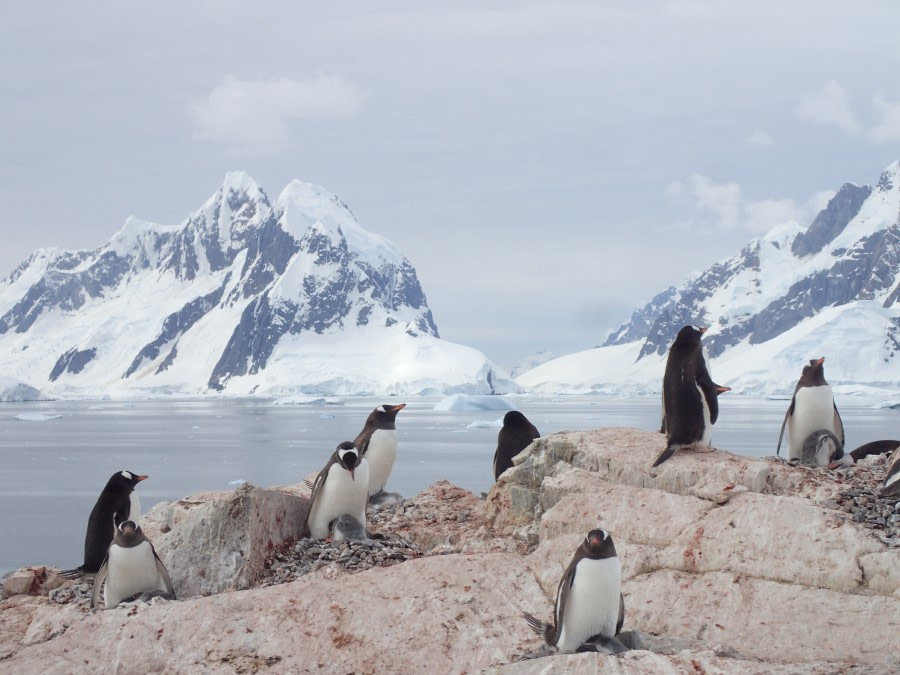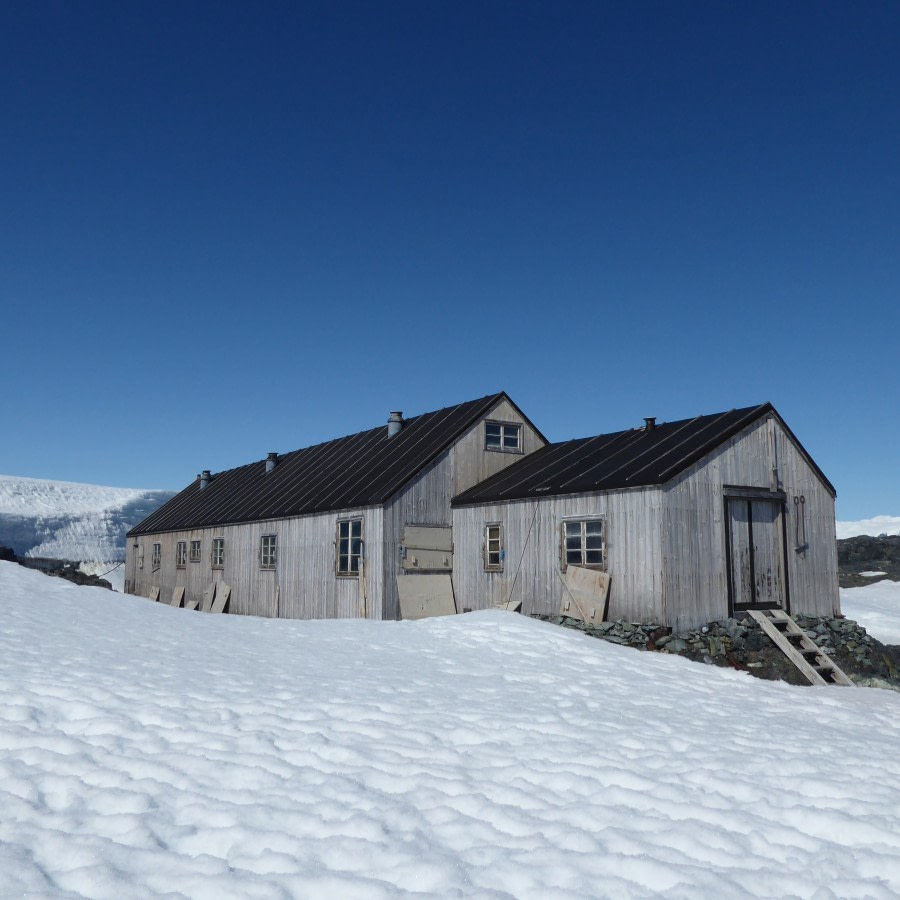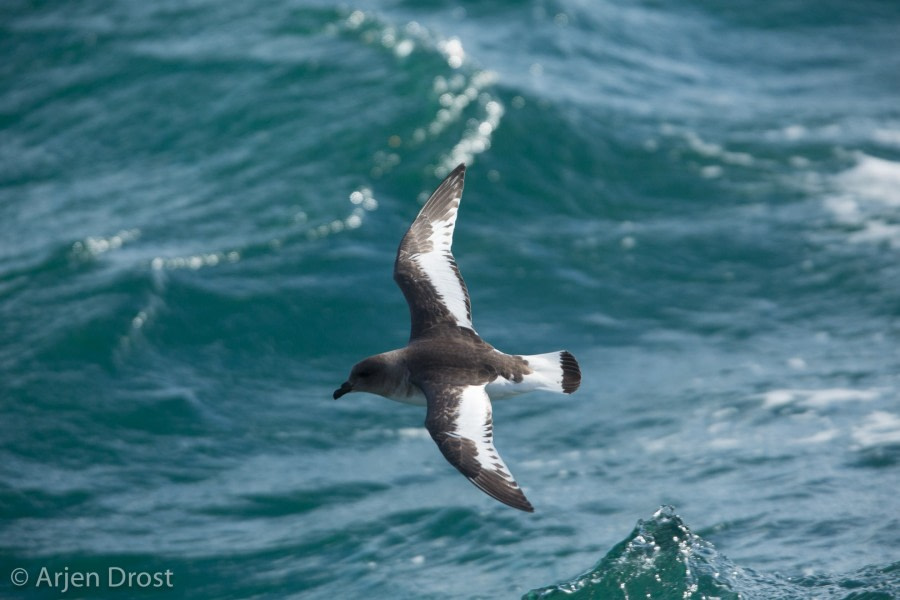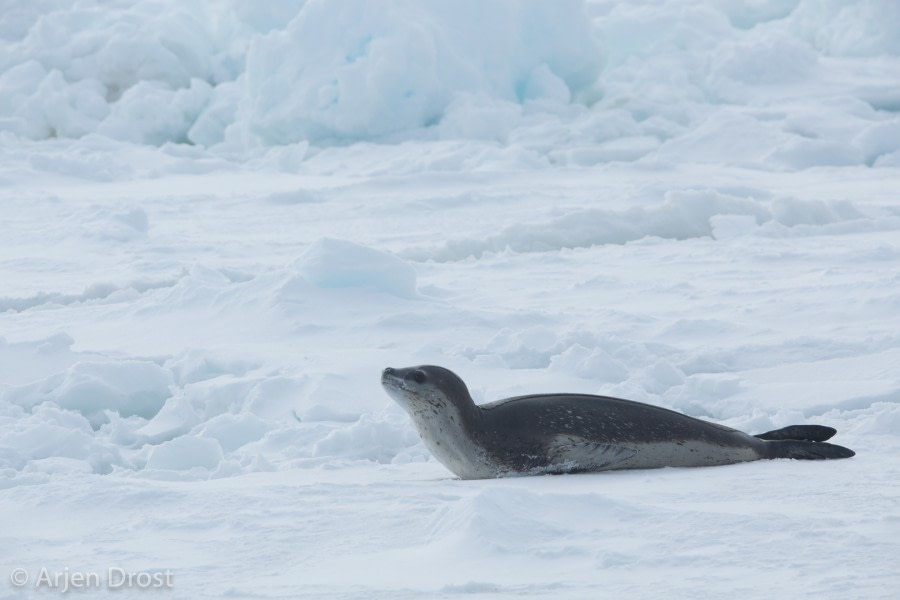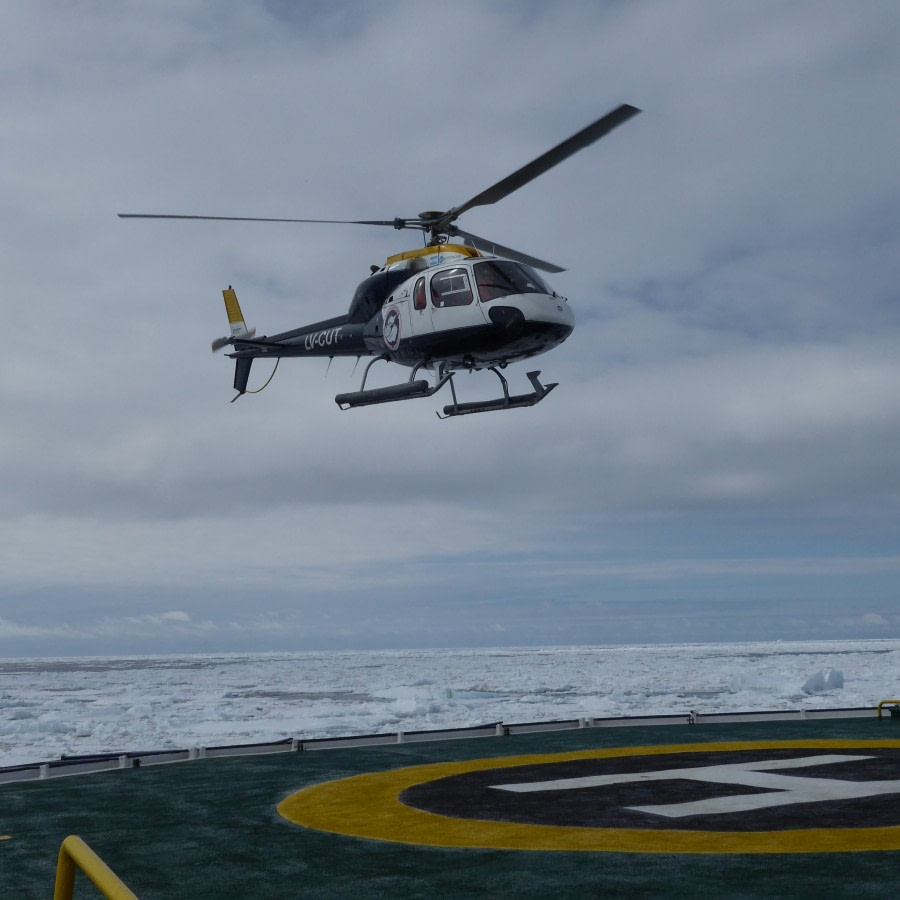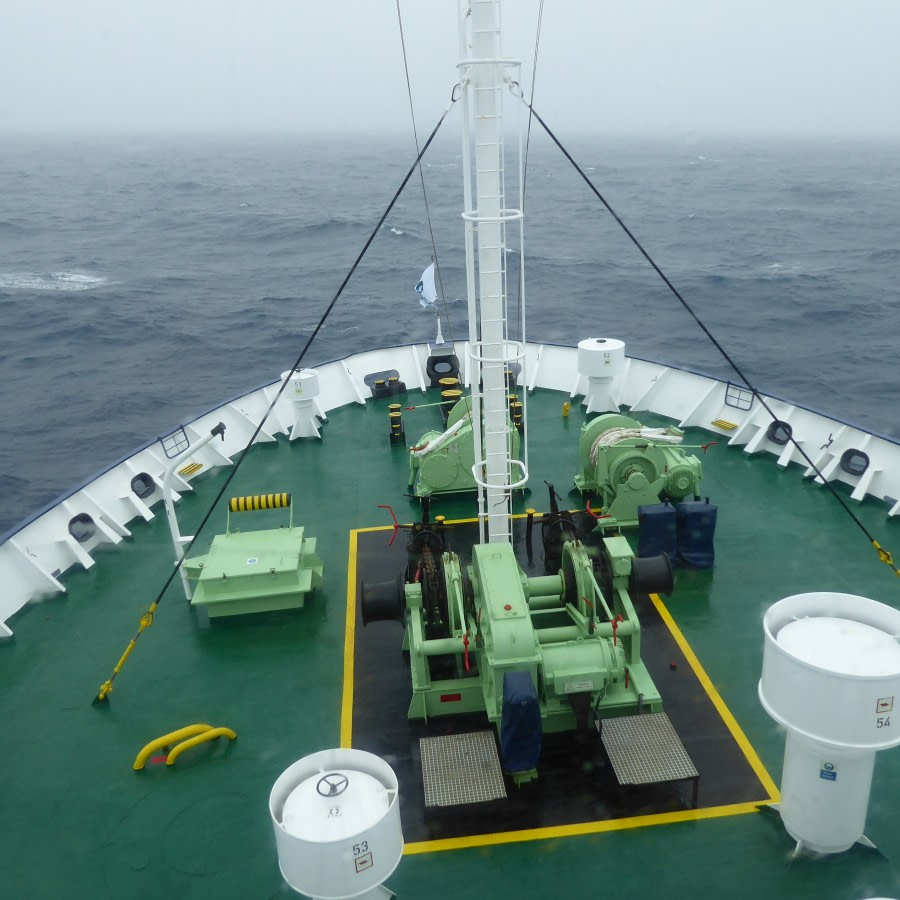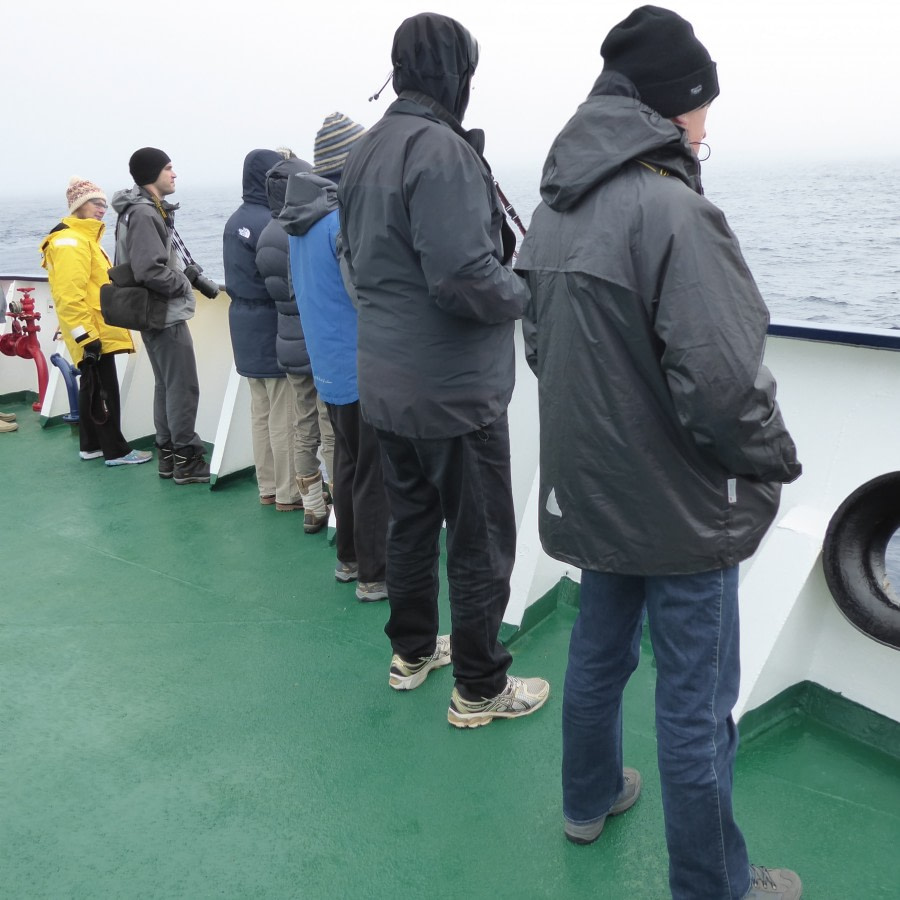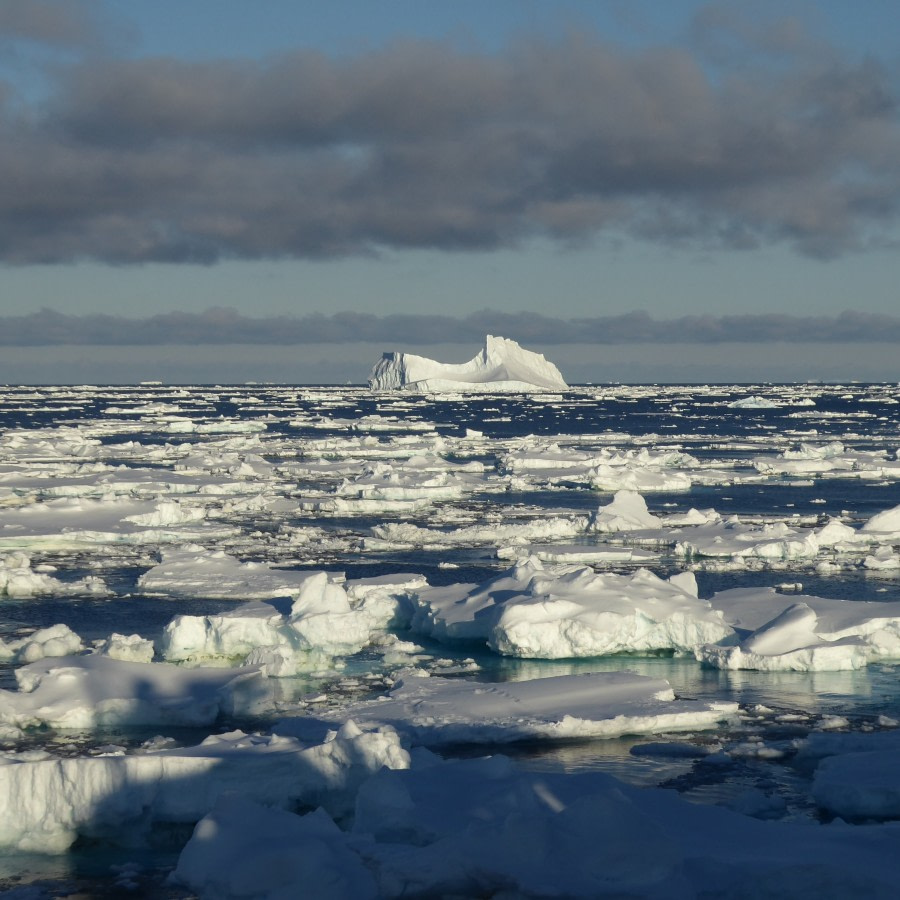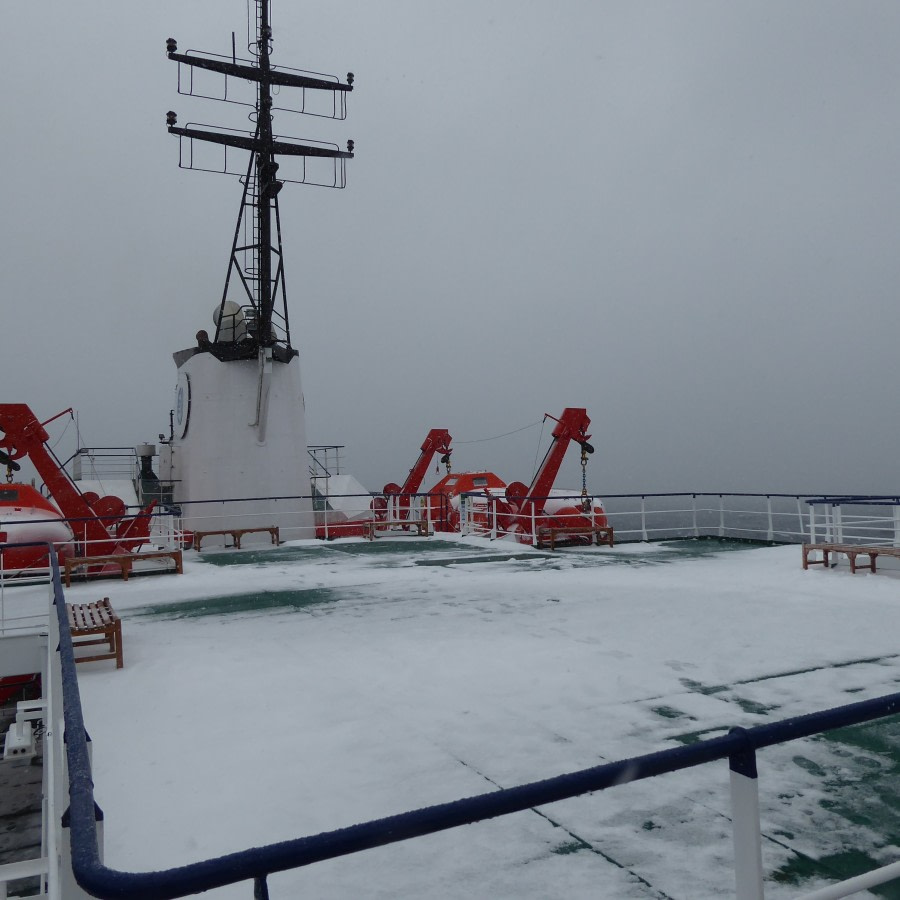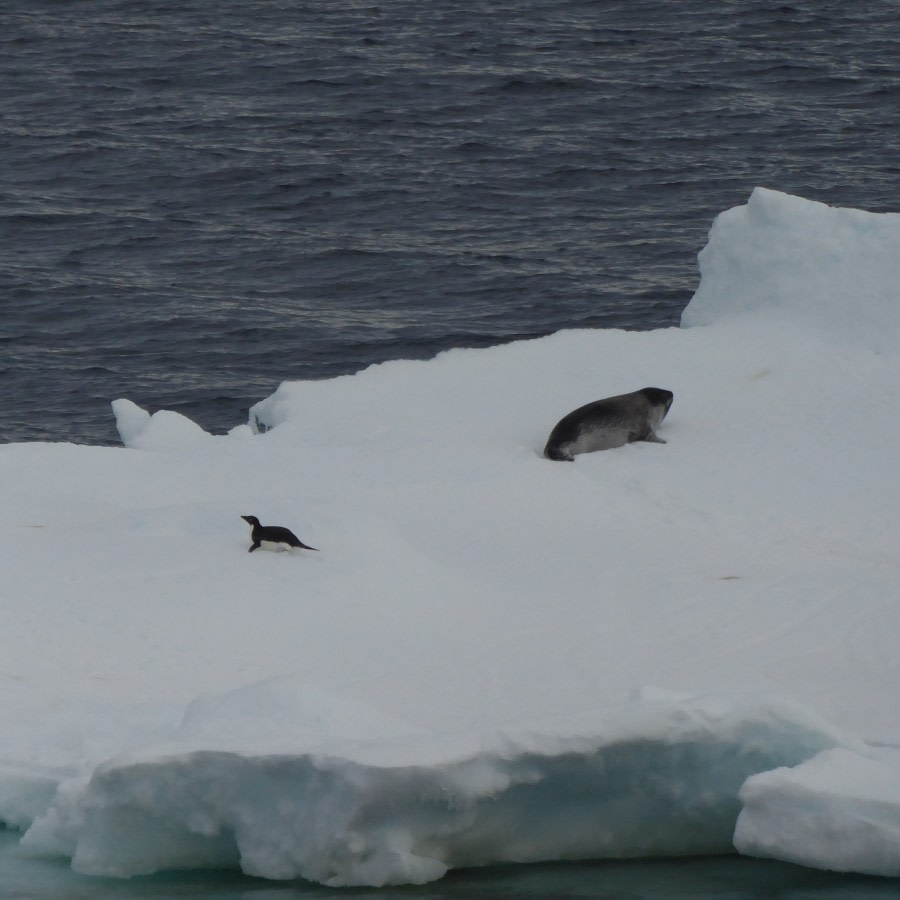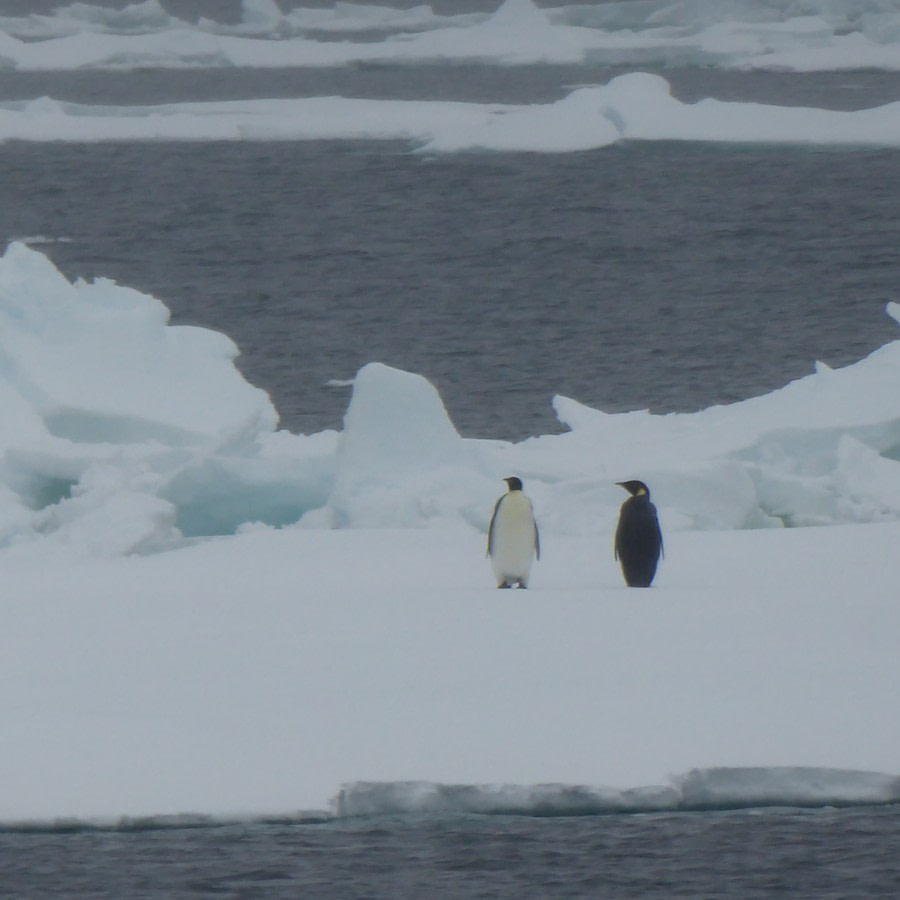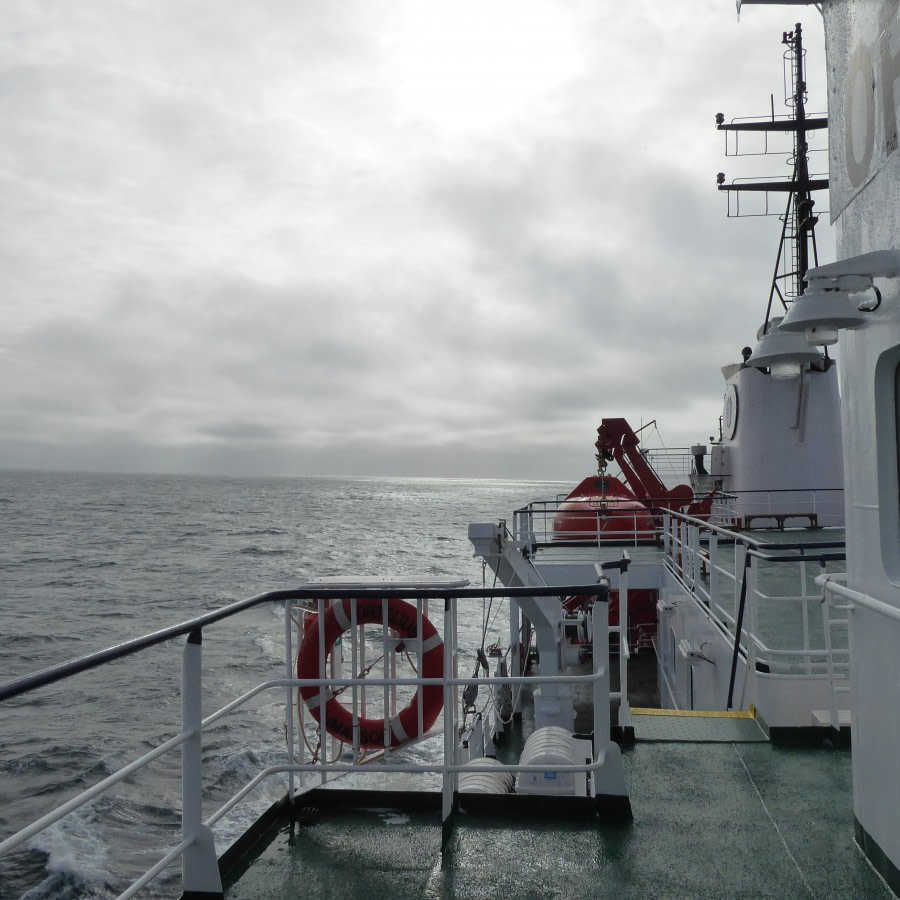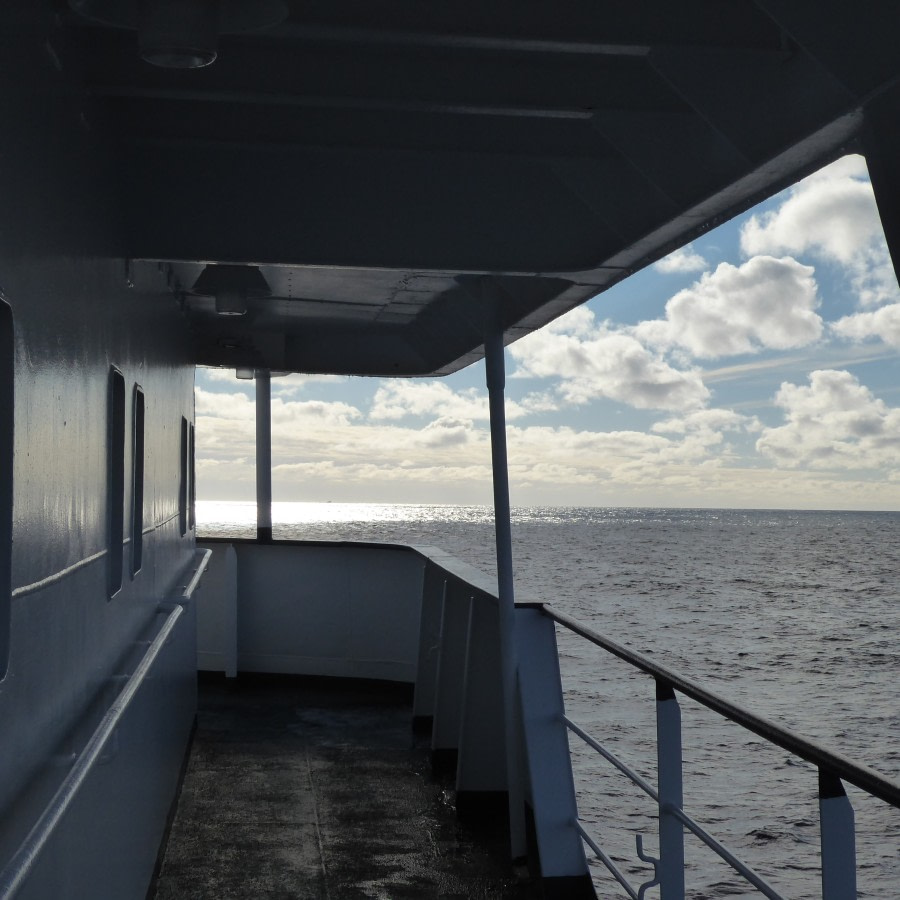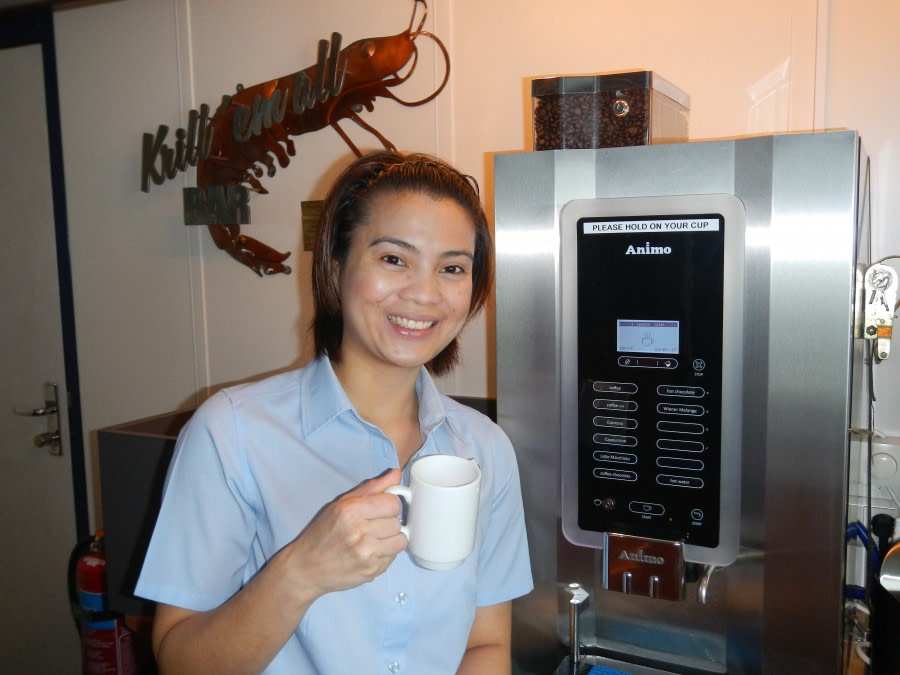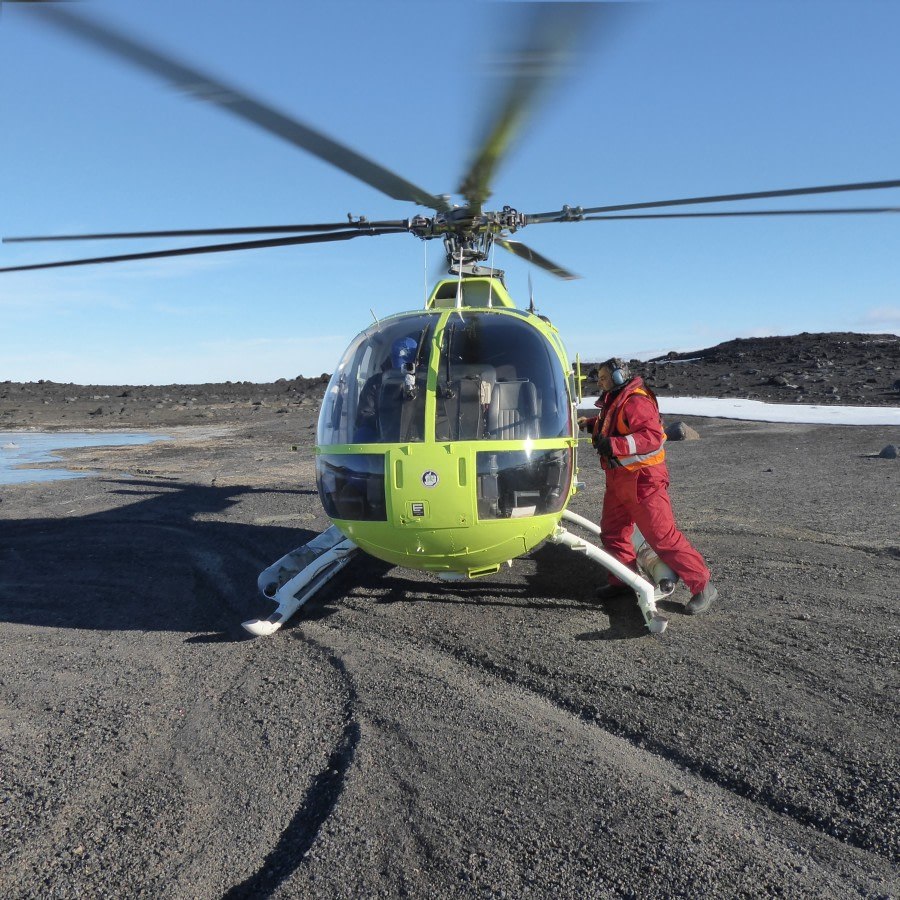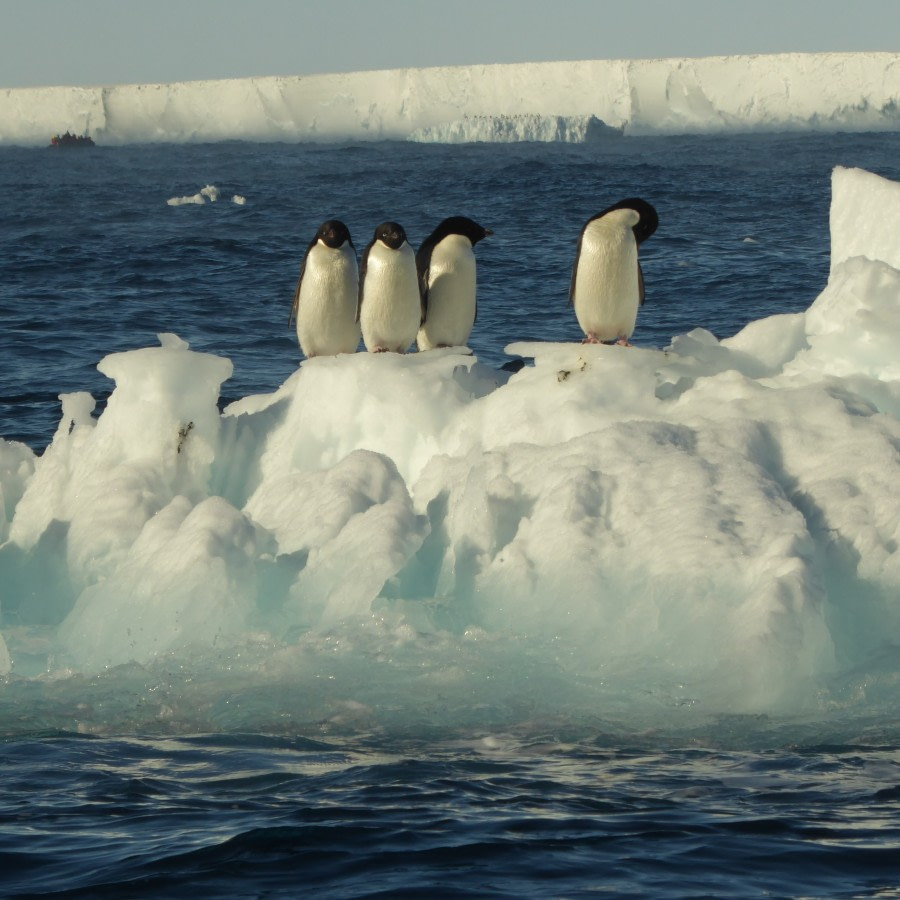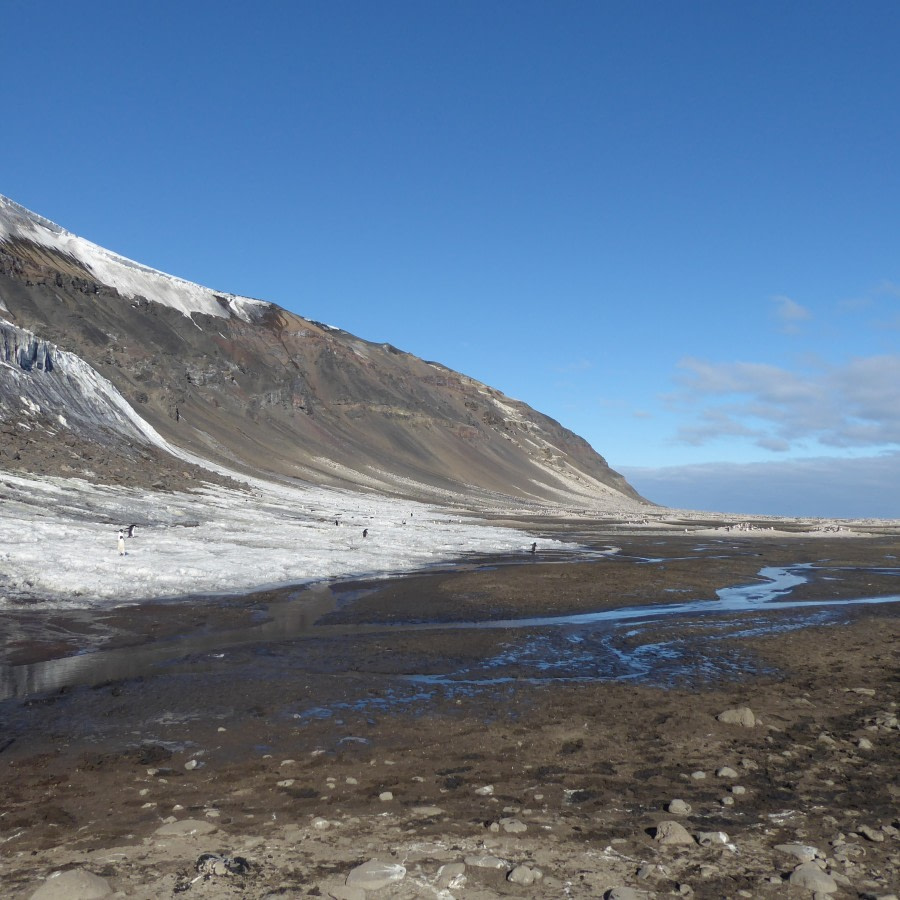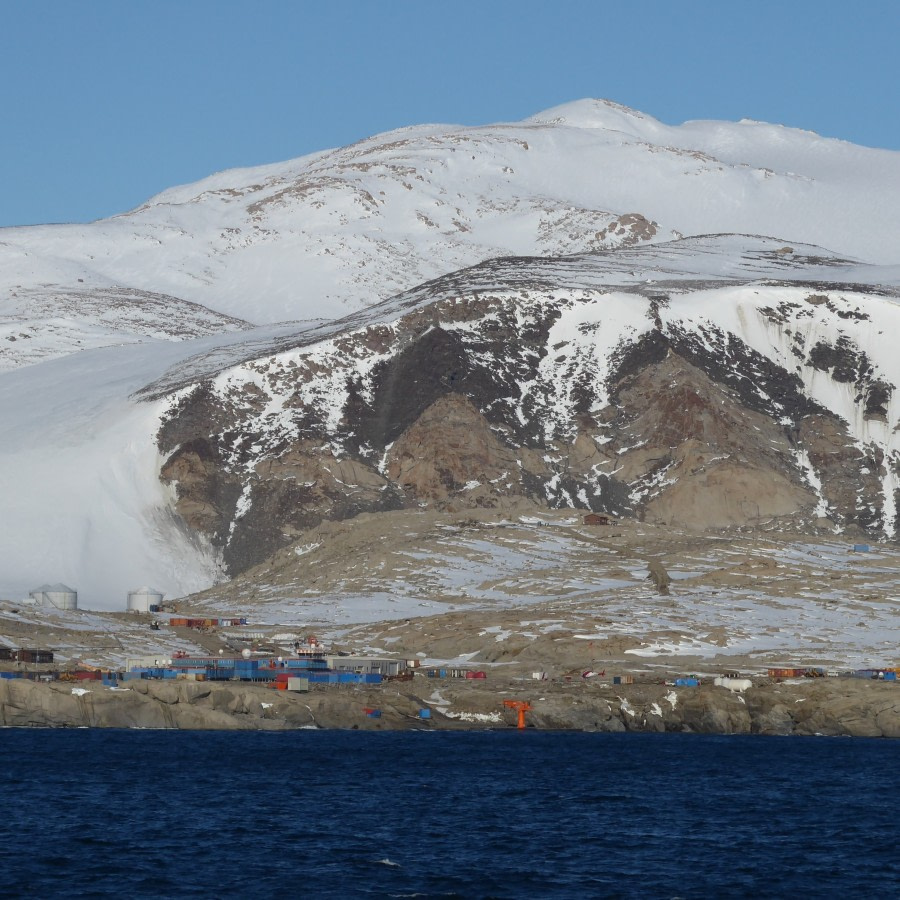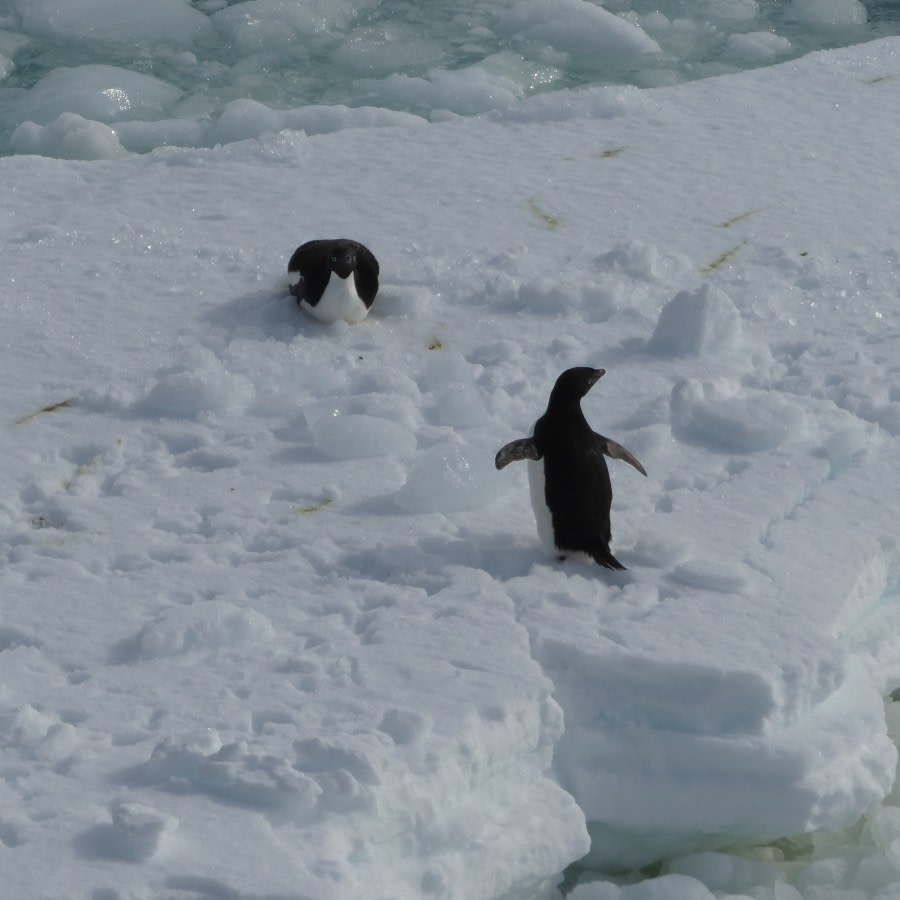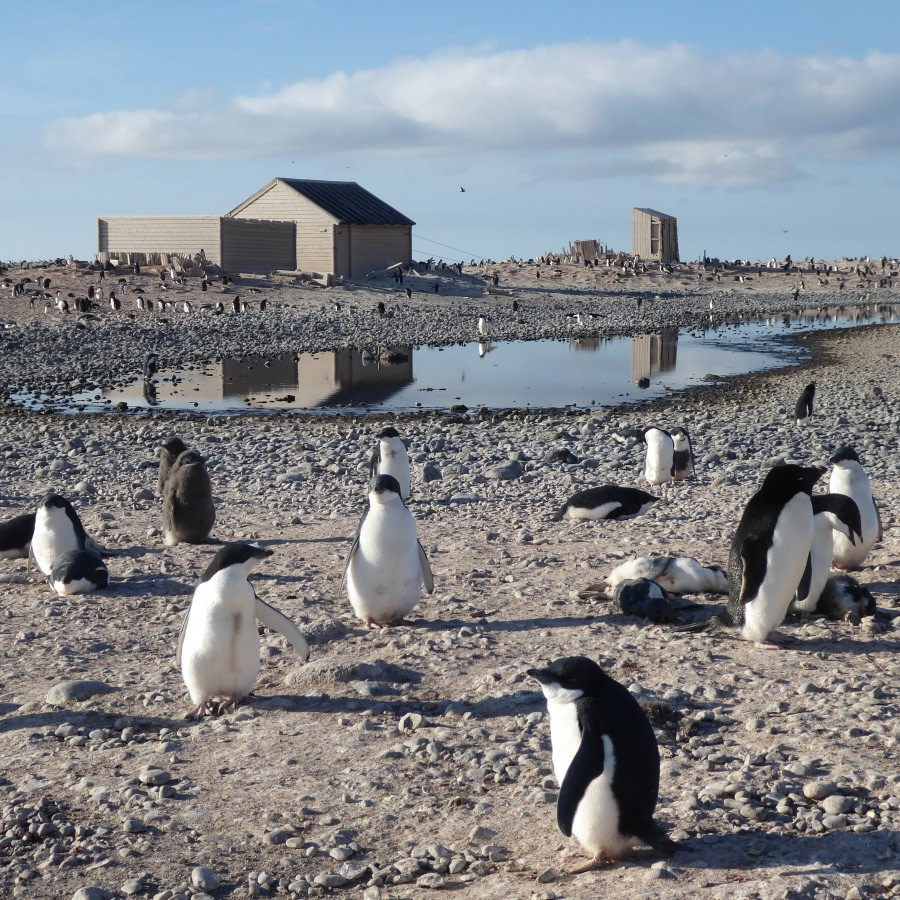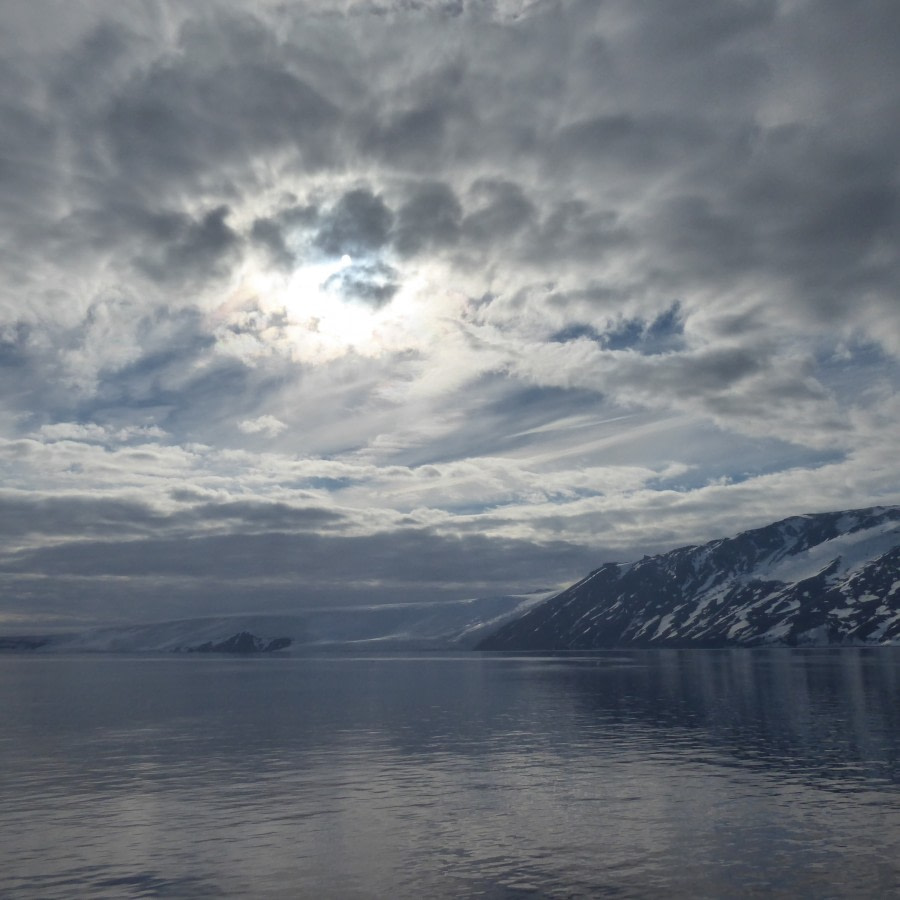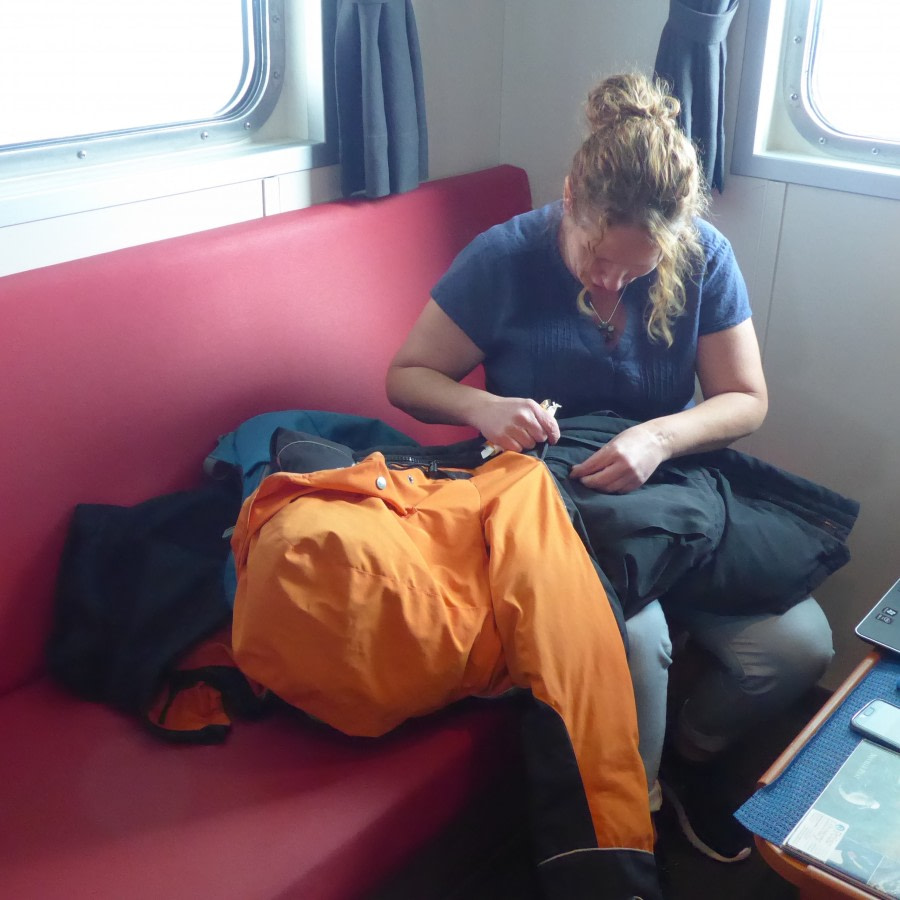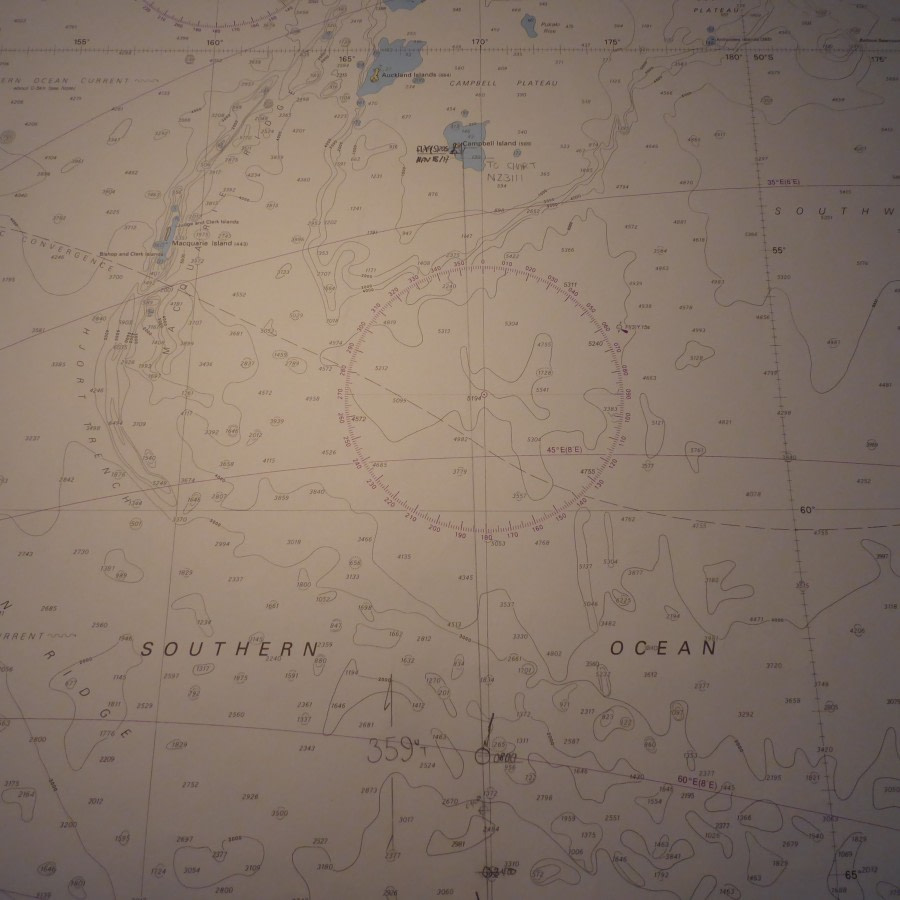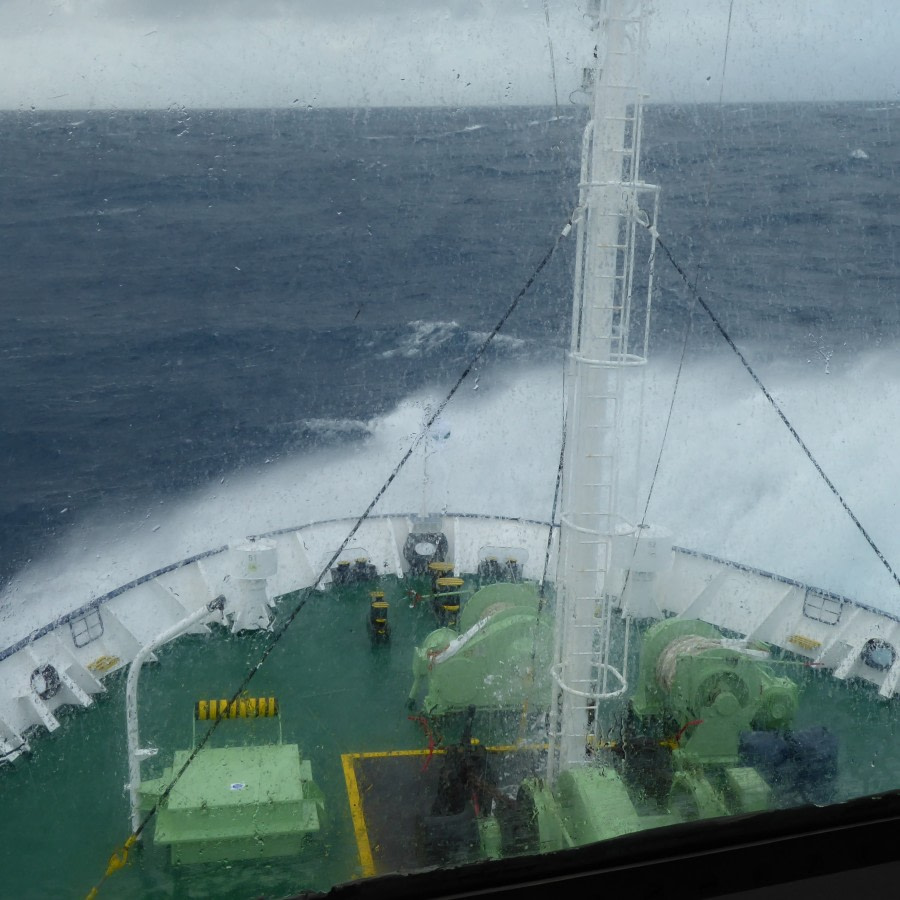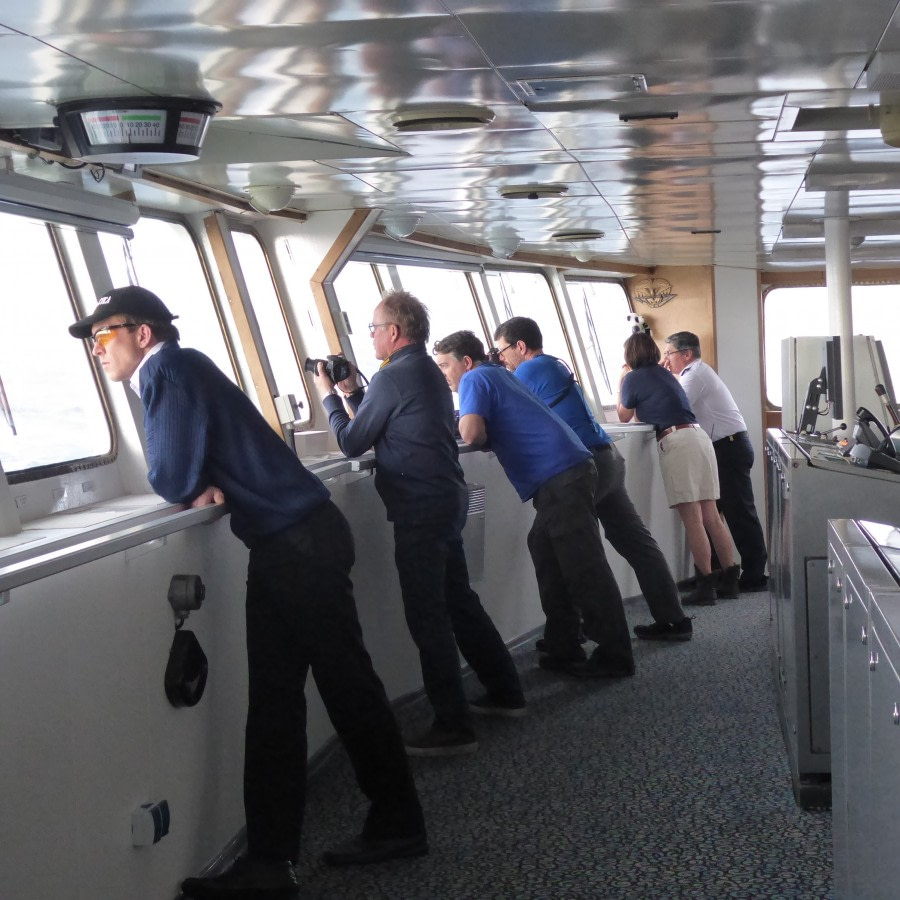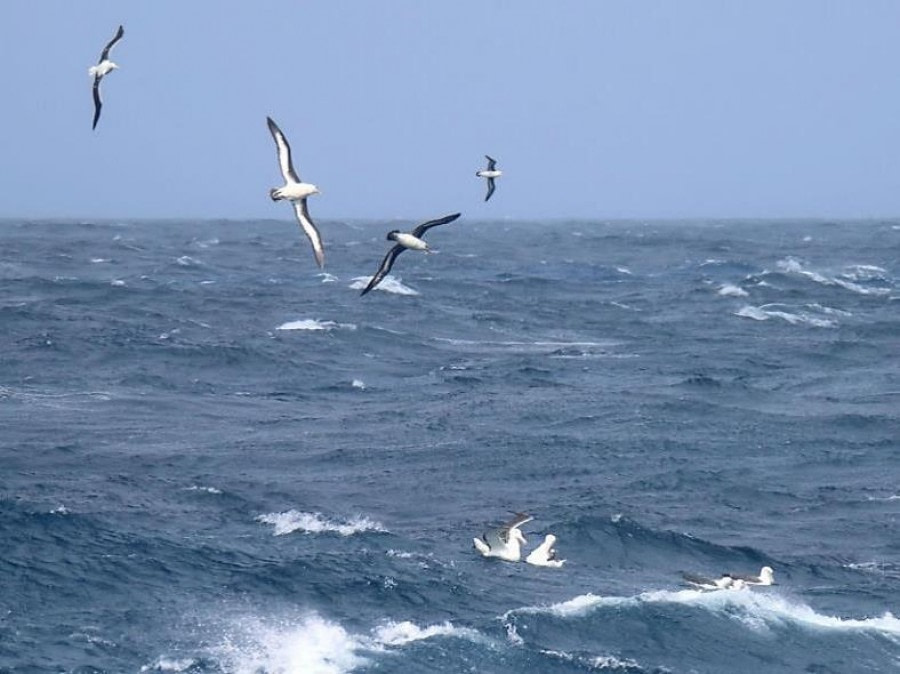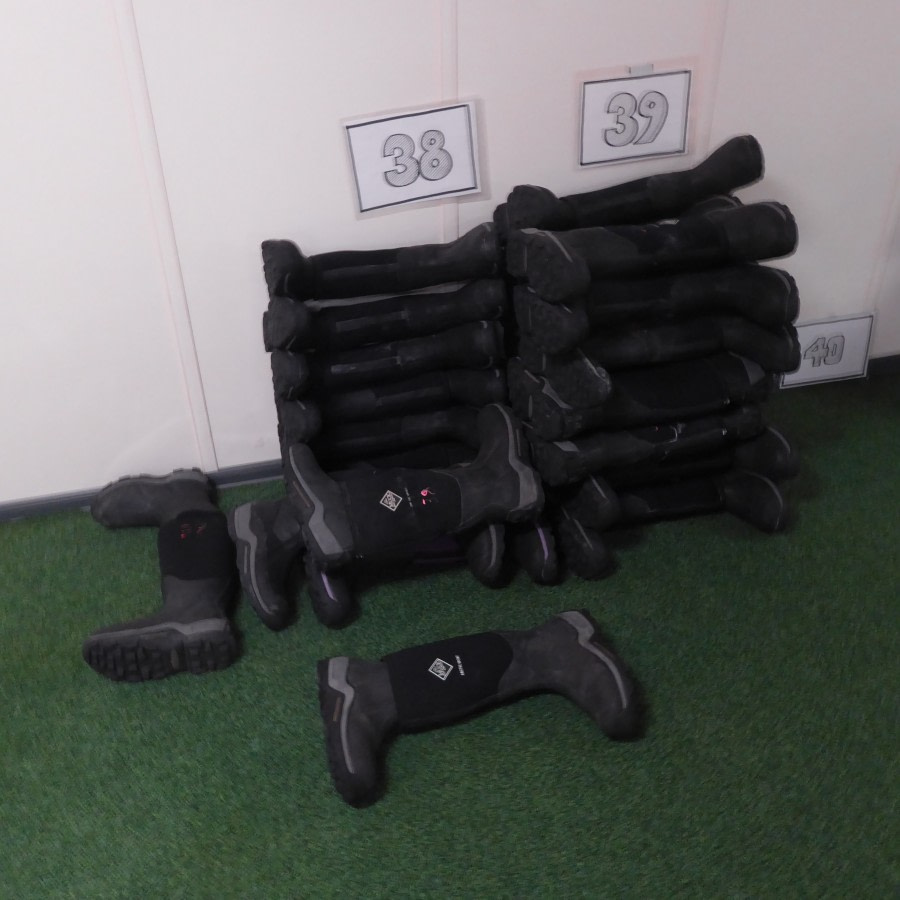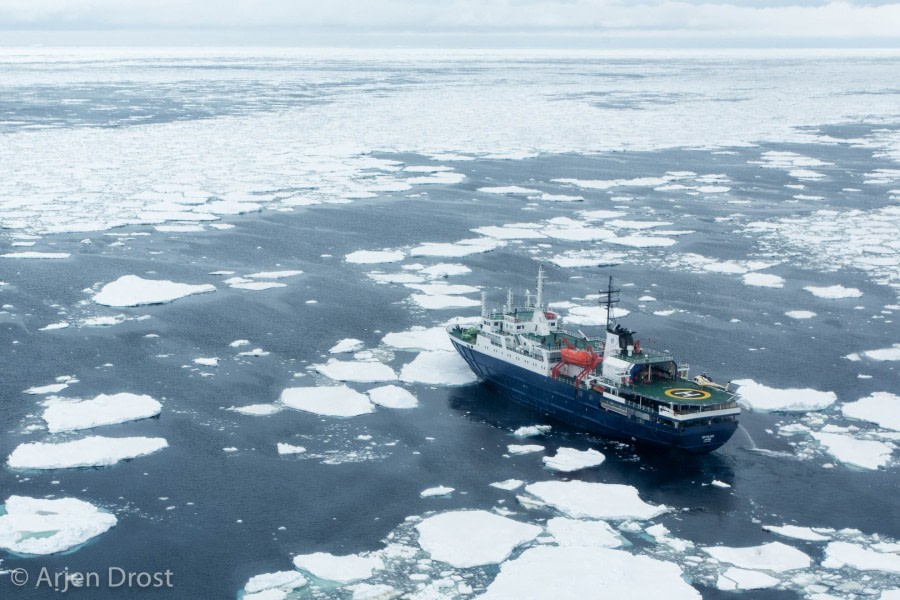| Datum: |
02.02.2017 |
| Position: |
77°25’S / 169°44’E |
| Wind: |
SE2 |
| Wetter: |
Partly foggy, partly blue skies & sunshine |
| Lufttemperatur: |
-7 |
Overnight the captain sailed the ship to just north of Cape Crozier, at the eastern end of Ross Island. Many of the landmarks in this area were named by James Clark Ross during his voyage in 1841, often after ships and their captains. In this case, Cape Crozier was named after Commander Francis R. M. Crozier, captain of the Terror, one of Ross' two ships.
The weather was good, but cold. Cheryl announced it was -6oC in the morning wake-up call, and we had both low fog around Mount Terror and a sea fog further out from land. The ice shelf itself was visible in the distance, and in some places fog-free. As we came closer the details of the ice shelf became sharper, with blue shadows and fractured white faces cut along the wall. The Ross Ice Shelf, around 400 miles long and up to 50 metres high, was first discovered by Ross on 28th January 1841, and is the largest floating ice sheet in the world.
When Cheryl announced the gangway time, we were all excited to hop in our little black boats, with up to two hours’ cruising planned. The gangway was a little tricky, but we have all practised now, so took it in our stride, simply waiting and watching until it was a good time to step in. After a few minutes’ driving toward the ice shelf, it started to come to life as we approached it. A rainbow of blues, greys and greens shone from the various facets of the ice, with pure, shining white glowing along the flat top of the shelf, where snow had fallen recently. Fractures in the ice held shadows, and in some places layering was visible across long distances. As we cruised along the length of the shelf, a few Adelie penguins could be seen porpoising in the water next to us, looking at the strange, noisy boats full of colourful people. The ice shelf was imposing, impressive and incredibly beautiful, with each new face showing unique colours and pinnacles, caves, cliffs and ledges making new shapes at each turn.
A small iceberg with a fairly flat surface held quite a few Adelies, lying down at rest and standing in small groups. The little berg was rocking slowly, and as the surface of the water raised and lowered, penguins gathered to consider jumping off into the sea, peering over the edge to examine the water around them for a few minutes, then backing up to wait for another time. Finally, one would slip and fall, and the others would follow. Even more entertaining was watching the penguins in the water that wanted to jump up onto the iceberg. These would 'fly' a metre or so out of the water, then hit the wall of the iceberg, and try to scramble up onto the level surface. Most did not jump high enough and gradually slid to the bottom of the icy slope, then fell backwards or upside down into the water.
All of the Adelies around us seemed to be on high alert, swimming in very tight groups, surfacing to look around on a regular basis. There were a lot of penguins in the water, but few of them were brave enough to come close to the zodiacs, so there were not many good photos of them swimming. As we travelled east, we came into the edge of the sea fog, and the air sparkled with small ice crystals. By this time the ship had started to disappear into the fog as well, and was reduced to an outline of grey against white - all the lines, cables and equipment outlined in fine detail by the mist.
Finally, we had to head back to the ship, and after a cold run back, Michael’s warm welcome and tasty food was very much appreciated.
Most of us were considering a quick after-lunch nap when helicopter flightseeing was announced. The beautiful afternoon sun beckoned, and we gathered in our groups to fly along the ice shelf. When we lifted off from the ship, the dark blue sea was below and the ice shelf a line of white ahead of us. The line quickly grew into the cracks, fissures and flat faces familiar from the morning, but this time we lifted up above them and flew over the shelf, looking from the sea deep into the interior, towards the pole. Our helicopters lightly touched down, and we had briefly landed upon the top of the Ross Ice Shelf! As we flew along, we could see Mount Terror rising above a fog bank in the distance. The fog ran in a thin band along the shoreline, and raised and lowered slowly, occasionally hiding the whole mountain, but usually leaving a sliver of clear air both above and below, with the mountain shining through.
Back on board, we had to look at our photos right away, so the bar was full of people leaning over shoulders to admire pictures and compare flights. The evening recap was well-attended, possibly more for a chance to visit with Charlotte at the bar than to hear the plans and tales from the staff.
